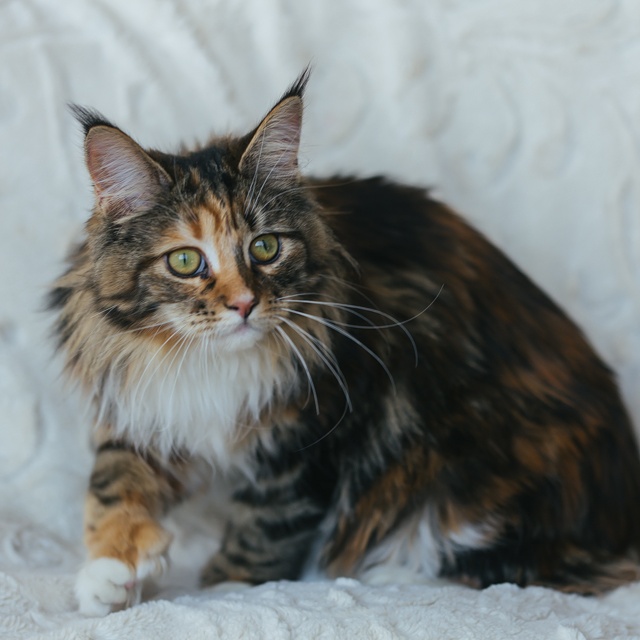Maine Coon cats, known for their size and grace, are fascinating creatures. But have you ever pondered their growth pattern, especially the differences between males and females? This growth chart unravels the enigma of Maine Coon development, providing valuable insights into weight, length, and gender-specific growth.
Gender Differences in Maine Coon Cats
Understanding the gender differences in Maine Coon cats can be essential. Let’s explore some key aspects:
Physical Differences
Male Maine Coons typically grow larger and have a more robust frame, whereas females are often more refined. Think of it like comparing a robust oak tree to an elegant willow; each possesses its unique charm.
Behavioral Differences
Though both genders share similar characteristics, males may be more outgoing and playful, while females might be more reserved and nurturing.
The Importance of Spaying/Neutering
Spaying and neutering can affect growth patterns and should be considered when assessing growth:
Spaying (Females)
Spaying often leads to a decrease in certain growth-related hormones, potentially affecting overall size and weight. It’s like pruning a plant; the process changes the way it grows but doesn’t diminish its beauty.
Neutering (Males)
Neutering males can also change growth patterns, possibly leading to a less muscular build. Consider it a change in direction rather than a hindrance in growth.
The Maine Coon Growth Stages
Kitten Phase (0-6 months)
During the first six months, Maine Coon kittens grow rapidly. Males tend to be slightly larger, even at this early stage. During this time, proper nutrition and care are crucial to ensure healthy development.
Adolescence Phase (6-12 months)
From 6 to 12 months, growth continues at a slightly slower pace. Males generally become more noticeably larger in weight and length compared to females. Proper feeding, adjusted for gender and size, is vital at this stage.
Adult Phase (1-3 years)
By the time they reach adulthood, males usually have a more significant final size, both in weight and length. This phase is about maintaining a balanced diet and regular check-ups to keep both males and females healthy.
Senior Phase (3+ years)
In the senior phase, both genders cease growing in length and focus more on maintaining health and vitality. Regular veterinary care and adjustments to diet and lifestyle are essential to support their well-being in these later years.
Factors Influencing Growth in Weight and Length
Genetics
Genetics plays a vital role in determining the growth patterns of Maine Coon cats. Specific genes will dictate not only the size but also traits that may be gender-specific, like the thickness of the fur or the muscle distribution.
Diet
Diet is integral to the Maine Coon’s growth. Gender-specific nutritional needs must be considered to ensure optimal growth. For example, males might require more calories due to their larger size, while females might need specific nutrients to support reproductive health.
Health Conditions
Health conditions that affect male and female Maine Coons differently must be addressed promptly to foster healthy growth. Regular veterinary check-ups can catch potential gender-specific health issues early, allowing for timely intervention and care.
The Detailed Maine Coon Growth Chart
Here’s a breakdown that includes weight and length ranges for both males and females:
| Age | Male Weight | Female Weight | Male Length | Female Length | Growth Stage |
|---|---|---|---|---|---|
| 0-6 months | 3-10 lbs | 3-8 lbs | 9-17 inches | 9-16 inches | Kitten Phase |
| 6-12 months | 10-20 lbs | 8-15 lbs | 17-28 inches | 16-25 inches | Adolescence |
| 1-3 years | 15-30 lbs | 12-25 lbs | 30-40 inches | 25-35 inches | Adult Phase |
| 3+ years | 18-30 lbs | 15-25 lbs | 30-40 inches | 25-35 inches | Senior Phase |
How to Use the Growth Chart Effectively
Utilize this chart as a tailored guide for both male and female Maine Coons, recognizing their individual needs. Regular monitoring and adjustments are keys to success.
Common Concerns and Questions
Is your male Maine Coon large enough? Is your female too small? Gender-related growth concerns are natural, and this growth chart serves as a valuable guide, steering you through the unique paths of male and female Maine Coon development.
Nurturing Your Maine Coon to Its Full Potential
Understanding the Maine Coon growth chart, including the differences between males and females, is like exploring a garden of diverse yet harmonious plants. Embrace the journey, recognize the uniqueness, and celebrate the growth of your Maine Coon, regardless of gender. Happy growing!
